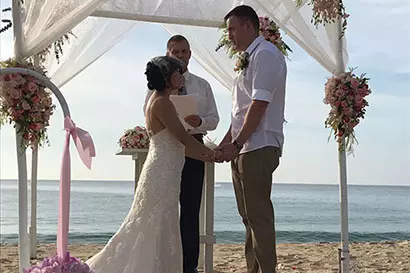Ad
Prefectures of Japan
Japan is divided into 47 prefectures, much in the same way that America is divided into states, or Canada is divided into provinces. Each prefecture has its own local government, dialect, and unique culture.
As the birthplace of more than a few Japanese heroes, Aichi is defined by its history. Aichi’s heroes include historical figures, industrial leaders, and sporting legends. Aichi is also well-known for its fantastic miso foods, so be sure to order a miso soup with your meal. Aichi’s capital city, Nagoya, is one of the biggest cities in Japan and is renowned for its excellent shopping. If you’re visiting in the summer, check out the Grand Sumo Tournament in July.
Like Japan’s other northern prefectures, Akita’s charm lies in its untouched natural landscapes, with picturesque rivers and flat lands found throughout the region, and rugged mountains surrounding its northern, southern, and eastern sides. This prefecture remains largely undeveloped, with Akita City acting as the major center for transportation and shopping. Kakunodate is famous for its well-preserved samurai districts, and is also a popular spot for cherry blossom viewing in the spring. Sake fans can sample the local brews, which are made with a special kind of rice grown in this area, called komachi rice.
Aomori is the northernmost prefecture on Japan’s main island, Honshu. Aomori is split down the middle by the Ou Mountains, creating two distinct climates, with heavy snowfall on the west side and relatively low year-round temperatures on the east side. This prefecture is full of wild, natural landscapes, including the UNESCO World Heritage virgin beech tree forest in the Shirakami Mountains. Aomori’s former capital city, Hirosaki, is sometimes called the “Kyoto of the North”. This culturally-rich city is built around a stunning castle, which is made even more beautiful by cherry blossoms in the spring. Aomori is located on the coast, so seafood, particularly scallops, are not to be missed in this prefecture.
Located just east of Tokyo, Chiba is visited by thousands of tourists every day as they enter Japan through Narita, Japan’s busiest international airport. After landing in Chiba, most tourists head straight to Tokyo, instead of exploring all that this pleasant prefecture has to offer. Chiba has some lovely sandy beaches, and a climate that’s quite mild year-round. It’s also a great location for shopping, with many large megastores selling everything imaginable, and of course, it’s also the location of the famous Tokyo Disneyland.
Hot spring-rich Ehime is home to a number of interesting Shinto festivals, and a very distinct local dialect. This mid-southern prefecture has miles of beautiful ocean-front views on its left, while Kochi and Tokushima prefectures rest on its right. Ehime is renowned for Matsuyama Castle, a national treasure and one of three remaining untouched Japanese fortresses. The castle can be reached by ropeway or a pleasant forest hike.
Coastal Fukui is renowned for its natural scenery. Much of this prefecture has been designated as a natural park area, making it an excellent choice for hiking and camping. Fukui has some nice hot springs, ski resorts and the famous Tojimbo cliffs. This prefecture also has one of the best dinosaur museums found anywhere in the world, with very good English explanations.
As one of the closest Japanese prefectures to the Asian mainland, Fukuoka is a place of large historical significance. It was the site of the Mongolian invasion in the late 13th century, and also the entry point from which Buddhism arrived and spread throughout Japan. As a result, some of Japan’s oldest temples, shrines and gardens can be found in Fukuoka. Fukuoka’s hiking trails are also among the best offered in the whole country.
Unfortunately, most people probably associate Fukushima with the nuclear power plant disaster in 2011. However, the evacuation zone is quite small compared to Fukushima’s overall size, and the majority of this prefecture is safe to visit. Fukushima can be reached from Tokyo in about an hour by Shinkansen, yet this thinly populated region couldn’t feel further from the crowds of Tokyo. Fukushima offers sweeping volcanic landscapes, ski resorts and fantastic hot springs. Aizi-Wakamatsu, a castle town with a fascinating samurai history, is one of its most famous attractions.
Landlocked Gifu offers a mixture of history, nature, and unique cuisine. With no bordering bodies of water, Gifu is one of the few places in Japan where the seafood is not exceptional. Instead, Gifu is famous for juicy Hida beef and hōba miso, which is a type of miso grilled on a hōba leaf. The north of Gifu includes the snow-capped mountains of the Japanese Alps, while the south is more flat and rural. The old farmhouses in Shirakawa-go offer a rare glimpse into rural Japanese life, and the beautiful Edo-period buildings and temples in Takayama have earned it the nickname “Little Kyoto”.
Gunma is a landlocked prefecture known for the variety of its natural scenery, with soaring mountain peaks contrasting against flat plains. Gunma’s hot spring resorts are very popular, including Manza Onsen, which boasts the most sulphuric onsen waters in all of Japan. Oze National Park features hiking trails through rural marshlands, which are particularly beautiful during the autumn leaf season, and bloom with cabbages in the late spring.
Hiroshima is popular stop on most tourist itineraries, with many hoping to understand more about this prefecture’s sad history. Tourists are also drawn to the ethereal-looking “floating” torii gate near Miyajima Island, which is said to be one of Japan’s three most beautiful views. While many tourists only spend a day or two in this prefecture, it has much to offer for those who stay longer. Despite its sad history, Hiroshima is a modern, exciting region with wonderful cuisine, including a distinct kind of okonomiyaki made with noodles.
Hokkaido is the northernmost of Japan’s four main islands, and one of the least developed areas of Japan. Few tourists venture this far north to see “Japan’s Alaska”, yet Hokkaido has an interesting history and a very distinctive culture. For most of Hokkaido’s history, it was inhabited by the hunter-gatherer Ainu culture. Over the last 100 years, it was populated by the Japanese, leading to a culture the blends Ainu, Japanese, and the Japan’s recent Western influences. The architecture is more modern and the big cities appear quite Westernized compared to Japan’s other major cities. Hokkaido’s mild summers make it a popular place to escape the humidity that scorches the rest of Japan. Summer is also an ideal time to see the stunning flower fields in Furano and Biei, and participate in hiking, camping, canoeing and other outdoor activities. Although Hokkaido’s winters are icy cold, Hokkaido has some of the best ski slopes in Japan, and is well-known for the Sapporo Snow Festival in February.
Hyogo combines both old and new Japan, with modern, international cities Kobe, as well as historical cities like Himeji. Kobe is a foreigner-friendly port city with an eclectic personality that makes it a popular place for expats, as well as tourists. Kobe offers fantastic shopping, interesting cultural attractions, and amazing cuisine, including famous Kobe beef. Awaji Island, one of the oldest settled areas in Japan, is connected to Kobe by the longest suspension bridge in the world. If you want to explore the older side of Hyogo, take the train to see Himeji, Japan’s most beautiful original castle.
Ibaraki is located along the Pacific coast, northeast of Tokyo. Its long waterfront line makes it a popular destination for day-trippers from Tokyo to enjoy swimming, surfing and other watersports. While the north is mountainous, most of Ibaraki is quite flat and dotted with dozens of refreshing lakes. Ibaraki is also well-known for Kairakuen Garden, a plum tree-filled paradise that is considered to be one of Japan’s three most beautiful gardens.
With historic buildings, beautiful gardens and culinary delights, Ishikawa is culturally-rich wherever you look. Kanazawa, with its well-preserved samurai district and gorgeous Kenrokuen garden, is the most famous city in Ishikawa. As you move north, you find the Noto Peninsula, home to pretty fishing villages, markets and festivals. One of Japan’s largest fisheries in found on the Noto Peninsula, and this whole prefecture is known for its amazing fresh fish, making it the perfect place to fill up on sushi.
Iwate is Japan’s second largest prefecture, located in the northeastern part of Honshu. This quiet, off-the-beaten path prefecture is known for its long coastline, exceptional seafood, scenic mountain ranges and excellent hot springs. This area is home to three enormous limestone caves, one of the largest underground lakes in Japan, as well as striking white birch forests. Former capital, Hiraizumi, has some outstanding UNESCO World Heritage temples, and Appi Ski Resort in the Appi highlands is considered to be one of the best ski slopes in the region.
Kagawa is Japan’s smallest prefecture, but, despite its size, it’s packed with points of historical and cultural interest. This soft-spoken area is known for its local udon noodles, pretty Ritsurin Garden, as well as the remains of Marugame Castle. It can be a good place to enjoy strolling and eating, before heading on to Okayama and Hiroshima.
Sunny Kagoshima is a center for both history and leisure culture. Enjoy the beautiful, warm climate while wandering through cedar forests, soaking in hot springs, or sailing between its many islands. Kagoshima is famous for its peculiar Japanese dialect, which was invented in order to confuse English code-breakers during WWII. Kagoshima Aquarium is also worth a visit to see the magnificent whale sharks.
Located south of Tokyo, parts of Kanagawa are considered to be Tokyo suburbs, home to hundreds of factories that form the heart of Japanese industry. As you move west, however, Kanagawa opens up into mountain ranges, hot springs, and even sandy beaches. The suburbs offer fantastic shopping, restaurants and entertainment, while the more rural areas provide opportunities for hiking, rock climbing, and many other outdoor activities. The historic city of Kamakura and the beautiful national parks in Hakone are both very popular day-trips from Tokyo. Kanagawa was a cultural center in ancient Japan, and later became a center for Western influence when its port was opened up to the world in the mid-19th century.
Kochi is a down-to-earth prefecture with rainforests in the north, and the Pacific Ocean in the south. This delightful prefecture has many interesting attractions, including Kochi Castle, one of the few original white castles in Japan. Kochi is also well-known for gokkun-umajimura, a sweet-and-sour non-alcoholic drink, which is enjoyed by both young and old. Yosakoi, a unique energetic style of dancing, originated in Kochi. This dance is now popular all over Japan, and a large Yosakoi festival is held in Kochi ever y August.
Pleasantly-sized Kumamoto boasts a wide array of hot spring resorts and mountain ranges that are waiting to be explored. Kumamoto rests near the very southern end of Japan, bordering on Miyazaki, Kagoshima, Fukuoka, and Saga prefectures. Most of the attractions, including Kumamoto Castle, temples and landscape gardens, can be reached on foot. After a day of sight-seeing, dine on some of Kumamoto’s unique foods, including karashirenkon, which is fried lotus root stuffed with mustard, and covered with soybean and wheat flour.
The cultural heart of Japan, Kyoto, is home to a staggering number of beautiful temples and shrines, and marks a standard stop on most visitors’ itineraries. From the endless stream of red torii at the Fushimi Inari Shrine, to the brilliant Golden Pavilion of Kinkaku-ji Temple, Kyoto’s history is a visual masterpiece. Discover Japan’s fascinating Geisha culture in Gion, or participate in a traditional Buddhist meditation session. Kyoto is also one of the best-known places in Japan for cherry blossom viewing, and each of the four seasons are celebrated with elaborate festivals.
Bordered by the huge cities of Nagoya, Osaka and Kyoto, Mie is usually overlooked by international tourists. It’s an ideal place to get off-the-beaten path, while still enjoying Japan’s fascinating history and beautiful scenery. Mie is home to Japan’s most revered Shinto shrine, Ise Shrine, while the city of Kumano is part of the UNESCO World Heritage Kii Mountain Pilgrimage Route. Mie’s rich history is complimented by its towering mountain peaks, ancient forests, and over 1,000 km of stunning coastline.
Miyagi is located in the northwestern part of Japan, along the Pacific Ocean. This prefecture is most well-known for Matsushima Bay, a unique body of water peppered with tiny islands covered in pine trees. The Bay is considered to be one of Japan’s three most scenic views. Miyagi’s capital, Sendai, is a large, modern city with a number of interesting cultural attractions related to its founder, powerful feudal lord, Date Masamune. If you’re looking for a more offbeat experience, check out Tashiro Island, also known as “Cats Island”. In this small, dog-free fishing village, the number of domestic cats far exceeds the small population of around 100 people.
Warm, laid-back Miyazaki is the perfect place to relax or enjoy outdoor activities. With an enormous coastline and one of the warmest climates in Japan, Miyazaki was a top destination for honeymoons, both domestic and foreign, until the 1980s. It has seen a decline in tourism over recent years, but still offers beautiful scenic hikes and plenty of places to unwind.
From winter sports to ancient castles, Nagano has something to offer every kind of tourist. Famed for hosting the 1998 Winter Olympics, Nagano has a well-developed tourist infrastructure and fantastic ski resorts. The capital city, Nagano, is built around Zenkō-ji, a stunning temple famed for its hidden Buddha statue, which is only displayed publically every 6 years. The busy city of Matsumoto is home to one of Japan’s few original castles, and watching the macaque monkeys bathing in the hot spring waters of Jigokudani Monkey Park is a unique and entertaining experience.
Nagasaki is probably most well-known as the site of the second atomic bomb dropped by the US during WWII, which killed 100,000 people. History aside, Nagasaki is a lively prefecture with a colourful mix of Chinese, Dutch and Portuguese influences. Nagasaki is home to the only Confucius shrine found outside China, as well as the haunting Hashima Island, which inspired scenes for the recent James Bond movie, Skyfall. This prefecture is composed of many islands, so leave plenty of time to explore.
Most tourists spend a day in Nara as a day-trip from Kyoto, but this prefecture, home to three ancient capitals, could easily keep anyone entertained for much longer. Smaller, yet equally culturally-rich as Kyoto, the attractions in Nara Park are all within walking distance, providing a refreshing break from the more wide-spread attractions in Kyoto. Don’t miss stunning Todaji Temple, the largest wooden building in the world, which houses one of Japan’s largest bronze statues of Buddha. Aside from the historic sites, Nara Park is also known for its 1000s of free-roaming deer, which are considered to be Shinto messengers of the gods.
Niigata, located along the Sea of Japan, is popular place year-round for all kinds of activities. This prefecture receives some of the highest snowfalls in the whole country, making it an ideal destination for snowboarding, skiing and hot springs. In the warmer weather, its sandy beaches and clear waters also make it a great beach destination. The rice and sake produced in Niigata is considered to be some of the best in Japan, and the city of Kashiwazaki hosts a spectacular fireworks display every summer.
Famous for its white beaches and black castle, interesting things are always happening in this little prefecture. Okayama Castle is open for exploration, with its remarkable black colour contrasting against the surroundings. Okayama is packed with a number of shrines teeming with tradition. Once you’ve had your fill of history, check out the Kirin Beer Park for a fun diversion.
Nowhere else in Japan really compares to its most southern prefecture, Okinawa, which consists of 49 inhabited islands and 111 uninhabited ones. Okinawan locals see themselves as a distinct people from mainland Japanese. This prefecture overflows with history, with one of the highlights being its role in the foundation of Karate-do traditions. Get your fill of history, and then fill up on the exotic local dishes and unique alcoholic brews. With year-round warm temperatures, you can also come here for excellent sunbathing and even more excellent scuba diving.
Chilled-out Oita is nestled against the ocean on its east side, with Fukuoka and Kumamoto bordering on the west. The prefecture is most famous for its many hot springs, particularly Beppu Onsen. Or, if you want to avoid touristy Beppu, there are also countless smaller hot springs where you can soak in peace. Be sure to save time to see the strange collection of 12th-century stone Buddhas in Usuki City.
Osaka is a lively, foodie hotspot, with regional specialities including savoury okonomiyaki and gooey takoyaki. The capital, Osaka City, is consistently ranked as one of the most livable cities in the world, with excellent shopping, great restaurants and exciting nightlife. Osaka is a more level-headed Tokyo, with never-ending entertainment options, and a quirky local dialect. Osaka Prefecture is also home to Kansai Airport, the second largest international airport in Japan.
Underappreciated little Saga boasts lovely countryside scenery and delicious cuisine. This prefecture is known for its pre-historic village ruins, and beautiful local pottery. The towns of Karatsu, Arita and Imari offer pottery tours, with the opportunity to paint your own pieces. Check out Saga’s famous balloon festival, held at the beginning of November every year.
The southeastern parts of Saitama are busy suburbs of Tokyo, but as you move west, the cityscapes gradually fade, replaced by rural farmlands and mountainous scenery. Within Japan, Saitama is known for its outstanding local sake, beers and green tea. Saitama also has a number of art museums and other cultural points of interest, including Kawagoe, known as “Little Edo”, which has a neighbourhood of well-preserved Edo period warehouse-style buildings.
Like its more famous neighbour Kyoto, Shiga prefecture is home to beautiful temples, shrines, museums, castles, and ninja houses. Shiga’s culture has always centered on Lake Biwa, Japan’s largest freshwater lake. The city of Hikone’s castle is one of only a handful of Japanese castles designated as national treasures. Like Gifu, Shiga is landlocked, and is well-known for its beef, called Omi beef, rather than its seafood.
Bordering on Yamaguchi, Hiroshima, and Tottori, Shimane prefecture is wet and mountainous. Come here in wintertime to check out the many ski resorts, while summertime is best spent exploring Shimane’s Oki Islands, which are bustling with all sorts of water sports and untouched nature trails for hiking.
With delicious sushi and a colourful Saturday flea market, Shizuoka is another underappreciated prefecture. Shizouka has an enormous coastline on its southern end, allowing fresh fish to be widely available at restaurants across the whole prefecture. In Shizuoka City, the remains of Sumpu castle are also worth checking out, and the grounds around the castle are a pleasant spot for walking.
Tochigi as a whole may not be particularly famous, but the city of Nikko is a well-worn stop on most Japan tourist itineraries. Nikko combines some of the best of Japanese culture and scenery. Towering, centuries-old cedar trees line the path to the exceptional temples and shrines in Nikko National Park. The city can be visited in a day-trip from Tokyo, but stay longer to check out the marshes, lakes, waterfalls and hiking trails. Outside of Nikko, Tochigi offers the hiking, skiing, and hot spring activities typical of rural mountainous Japan. The capital, Utsunomiya, is known for its excellent gyoza dumplings, which are loved by locals and tourists alike.
Quiet Tokushima rests in the mid-south of Japan, neighbouring Ehime and Kochi. Its tranquil palm-lined boulevards are nice for strolling. Tokushima has a number of interesting art museums, as well as nearly-free tours of Tokushima Castle. The Awa Dori festival is Tokushima’s most famous attraction, occurring from August 12- 15 annually. In this festival, groups of people perform exciting, highly choreographed dances.
With a population of over 13 million, 23 wards, and a virtually endless variety of attractions, cuisine and entertainment, Tokyo is a challenging place to sum up in a few words. You could easily spend your entire trip to Japan in just Tokyo, and this prefecture would continue to surprise you every day. Tokyo is the epicenter of the futuristic technology and bizarre inventions that people often associate with Japanese culture. Despite its fast pace and obsession with all things modern, Tokyo’s past is still very much alive in its museums, temples, and in historical districts like Asakusa.
This small, mid-south prefecture is known for its dense, but incredibly friendly, population. Tottori will boggle your mind with its delicious seafood, and juicy pears. Tottori also has a famous set of sand dunes, where visitors can do everything from collecting seashells to camel-riding.
With the Sea of Japan on one side, and the Japanese Alps on the other, Toyama offers an impressive variety of natural attractions. This prefecture is home to Mount Tateyama, one of Japan’s three holy mountains, as well as the Kurobe Gorge, with its steep cliffs and virgin forests. There’s also the famous Tateyama Kurobe Alpine Route, including the snow corridor in Muroda, where the snows walls can tower up to 18 meters on either side.
Wakayama’s profound beauty impresses deeply upon many visitors. Touching Nara, Osaka, and Mie prefectures, with its back to the ocean, jellybean-shaped Wakayama is most famous for its sacred mountain, Koya-san. Spend the night in one of the mountain shrines, and take a moment to explore Japan’s largest cemetery. Then, head down to the coastline for fantastic diving and snorkeling.
Escape to this mountainous prefecture for fantastic food, culture and scenery, without all the tourists. Its three sacred mountains, or Dewa Sanzan, have long been sites of pilgrimage and spirituality. Equally fascinating is Yamadera, a beautiful temple with buildings extending up a mountain northeast of Yamagata City. Yamagata is also known for its succulent fruits, particularly cherries, as well as delicious Yonezawa beef.
Yamaguchi echoes a long-past time of prosperity. It was intentionally built to match the splendor of Kyoto, and was known as the “Kyoto of the West”. Although much of the city has deteriorated since its prime, there are still numerous splendid shrines that are open for visiting. If you come around August 6 and 7, you’ll be able to catch the famous Lantern Star Festival.
Rural Yamanashi is a popular place to escape the Tokyo city life. It offers beautiful mountain views, and on clear days, you can even catch a glimpse of famous Mt. Fuji. There are countless options for outdoor excursions, with particularly superb hiking paths. Yamanashi is also home to Zuigakunin, a large international meditation center. If you visit in the summer, check out the famous fire festival held every August 26 to honor the goddess of Mt. Fuji.
Find out more about getting married in Japan in our Japanese Wedding Guide or visit our Japanese Wedding Directory to start planning your dream wedding.















